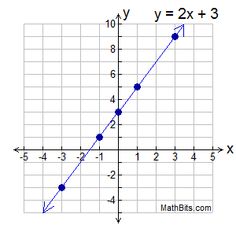How to Graph Linear Equations: 5 Steps

Introduction:
When learning algebra, one of the most crucial skills to acquire is understanding how to graph linear equations. It helps you visualize relationships between variables and solve mathematical problems. In this article, we will break down the process of graphing linear equations in five easy-to-follow steps.
Step 1: Understand the Slope-Intercept Form
Before you start graphing, make sure the equation is in slope-intercept form: y = mx + b, where ‘m’ represents the slope of the line, and ‘b’ is the y-intercept (the point where the line crosses the y-axis).
Step 2: Identify the Slope and Y-Intercept
When your equation is in slope-intercept form, it’s easy to identify the slope (m) and the y-intercept (b). For example, if your equation is y = 2x + 3, the slope (m) is 2, and the y-intercept (b) is 3.
Step 3: Plot the Y-Intercept
Begin by drawing a coordinate plane (x-axis and y-axis intersecting at a right angle). Plot the y-intercept on the graph by finding the point on the y-axis corresponding to b’s value. In our example, we would plot (0, 3).
Step 4: Use the Slope to Find Another Point
To draw a straight line, you need at least two points. Utilize the slope value (m) to find another point on your line. The slope represents ‘rise over run,’ meaning for every unit of rise (change in y), you move a certain number of units horizontally (change in x). With our example’s slope of 2, we rise two units and run one unit. Starting from our y-intercept (0,3), we move two units up and one unit to the right, landing on the point (1,5).
Step 5: Draw the Line
Now that you have two points, you can connect them with a straight line extending through the entire graph. This line represents all possible solutions for the linear equation. In our example, the line would pass through points (0,3) and (1,5).
Conclusion:
Graphing linear equations is an essential skill in algebra and allows you to better understand relationships between variables. Following these five steps will make the process easier and more efficient. With practice, you’ll become a pro at graphing linear equations in no time!






